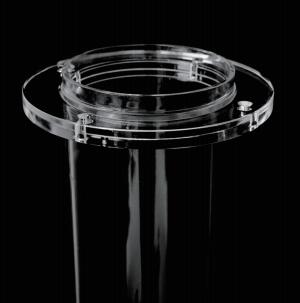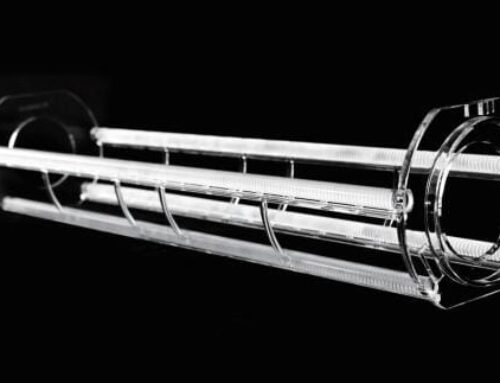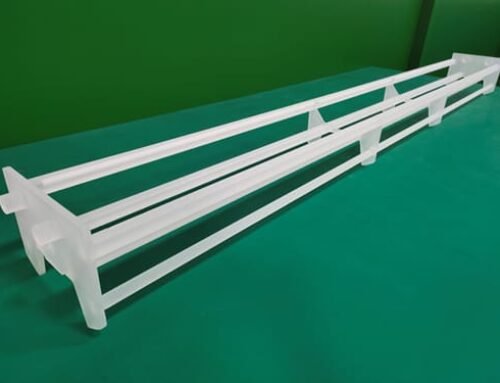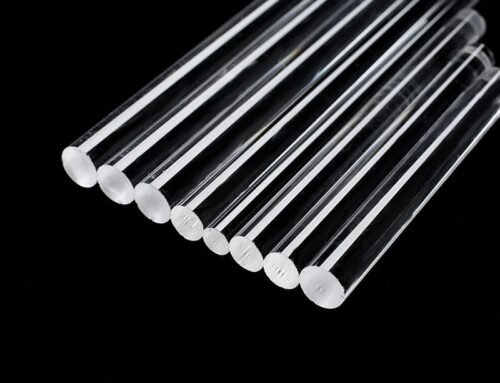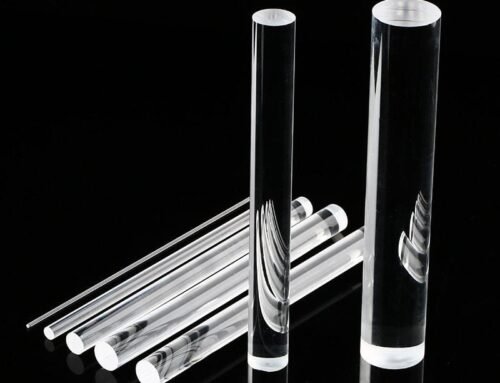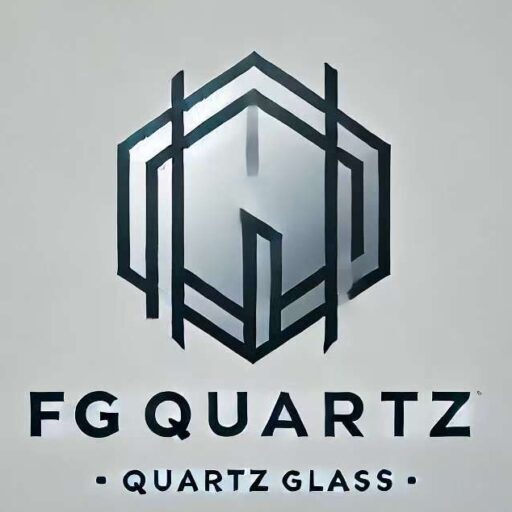Introduction to Fused Silica and Quartz Glass
Fused silica and quartz glass are two materials often utilized in the fields of optics, electronics, and various industrial applications. Both are valued for their distinct properties, but they are not the same. Fused silica, primarily composed of silicon dioxide (SiO2), is produced through the melting process of silica sand. This process results in a glass that offers superior thermal stability and a low coefficient of thermal expansion. This unique characteristic makes fused silica an ideal choice for applications involving high temperatures, such as in glassware for laboratories and in optics for high-precision lenses.
On the other hand, quartz glass is also primarily silicon dioxide but is derived from natural quartz crystals. It undergoes processes like cutting, polishing, and sometimes melting, to create the final product. Quartz glass is known for its excellent optical clarity and mechanical strength. Its applications are widespread, encompassing the manufacturing of high-quality optical components, as well as specialized equipment in the semiconductor industry. In many cases, quartz glass is preferred for applications that require robustness and stability under varying environmental conditions.
The distinction between these two materials is essential for professionals in industries such as aerospace, optics, and telecommunications. Understanding their unique properties can lead to better materials selection, ultimately enhancing performance and reliability within specific applications. As advancements in technology continue to evolve, fused silica and quartz glass remain pivotal materials for innovation, particularly in critical sectors requiring precision and durability. The clear differentiation between fused silica and quartz glass forms the foundation for informed decision-making in applications that depend on their distinct attributes.
What is Fused Silica?
Fused silica, also referred to as vitreous silica, is a high-purity form of silicon dioxide (SiO2) that is produced through the melting of high-quality quartz crystals or through the flame hydrolysis process. This form of silica possesses a unique glassy structure, created by rapid cooling that prevents crystallization. The manufacturing process begins with the careful selection of raw materials, which undergoes high-temperature treatment to attain the desired purity levels, often exceeding 99.9%. This results in a product characterized by its low hydroxyl (OH) content, thus enhancing its performance in various applications.
Fused silica exhibits notable properties, particularly its exceptional thermal resistance and optical clarity. It can withstand temperature variations of up to 1,200 °C, making it particularly advantageous for applications that require high thermal stability. Furthermore, its low thermal expansion coefficient allows it to maintain dimensional stability even during rapid temperature changes, which is critical in environments subjected to thermal cycling. When it comes to optical applications, fused silica offers excellent transmittance across a wide range of wavelengths, including ultraviolet (UV), visible, and infrared (IR) light. This characteristic makes fused silica an ideal choice for high-precision optics, such as lenses, prisms, and other components where clarity and consistency are paramount.
Given its unique properties, fused silica finds significant usage across various industries. In the field of optics, it is widely utilized in the production of lenses and mirrors due to its superior optical characteristics. In telecommunications, fused silica fibers are integral in fiber optic cabling, allowing for efficient light transmission over long distances. Additionally, in semiconductor manufacturing, fused silica serves as a crucial material for photomasks and other high-precision components required in the production processes. The remarkable attributes of fused silica make it a versatile and invaluable material across diverse applications.
What is Quartz Glass?
Quartz glass, also known as fused quartz, is a type of glass that is primarily composed of silicon dioxide (SiO2). It is distinguished by its high purity and thermal stability, making it ideal for a variety of applications. Unlike traditional glass, which may contain other compounds such as sodium and calcium, quartz glass is made from a single component, ensuring that it has unique properties that make it suitable for demanding environments.
This material is generally produced by melting high-purity quartz crystals or by using synthesized SiO2. The melting process involves heating quartz at high temperatures, typically exceeding 1,700 degrees Celsius, until it transforms into a viscous liquid. Once cooled, this liquid forms a solid glass that retains the attributes of high purity and homogeneity. The resulting quartz glass exudes remarkable characteristics, such as low expansion, high transmission of ultraviolet (UV) light, and exceptional chemical resistance.
Quartz glass naturally occurs in different forms, including crystalline quartz and amorphous silica. However, the production of quartz glass typically involves the amorphous variant. This distinction is essential as the behavior and properties of crystalline quartz differ significantly from those of its amorphous counterpart. Notably, quartz glass demonstrates minimal variation in thermal performance, making it suitable for applications in environments that involve rapid temperature fluctuations.
Furthermore, the uses of quartz glass span diverse industries. In construction, its strength and durability make it an ideal choice for high-performance building materials. In the electronics sector, quartz glass is utilized for manufacturing components that require high thermal stability, such as semiconductor wafers and optical fibers. Additionally, its properties render it essential in laboratory settings, where accuracy and resistance to chemical exposure are critical. Overall, quartz glass stands as a highly versatile and valuable material across various applications.
Comparison of Properties
Fused silica and quartz glass, while often used interchangeably in various applications, exhibit distinct differences in their properties that can influence their performance in industrial contexts. One of the primary physical characteristics to consider is the refractive index. Fused silica typically has a refractive index of approximately 1.46, whereas quartz glass has a marginally higher refractive index at about 1.54. This difference can affect light transmission and the optical clarity of the respective materials, making fused silica preferable in applications requiring minimal optical distortion.
Another critical property to compare is thermal expansion. Fused silica boasts a significantly lower coefficient of thermal expansion (CTE), around 0.5 x 10^-6/K, compared to quartz glass, which has a CTE of approximately 0.6 x 10^-6/K. This property allows fused silica to withstand rapid temperature changes without warping or cracking, thus making it advantageous in thermally demanding applications, such as semiconductor fabrication and high-temperature laboratory equipment.
Chemical durability is also notable in the comparison of these two materials. Fused silica is highly resistant to chemical attack and is unaffected by acids and bases at high temperatures. In contrast, quartz glass can exhibit susceptibility to certain chemical reagents, especially at elevated temperatures. This difference can guide material selection when it comes to applications in chemical processing or high-purity environments.
Finally, light transmission is a noteworthy factor, with fused silica providing superior transmission in the ultraviolet range compared to quartz glass. This makes fused silica an ideal choice for UV applications, such as photolithography and UV curing processes, where enhanced light transmission can lead to greater efficiency and precision. Understanding these differences in properties is essential for selecting the appropriate material for specific applications, ensuring optimal performance and longevity in use.
Applications of Fused Silica
Fused silica, known for its exceptional thermal resistance and optical clarity, finds extensive use across various industries. One of the primary applications is in the manufacturing of optical fibers, where the material’s low attenuation and excellent light transmission properties are crucial. Fused silica’s purity allows for the production of fibers that can transmit data over long distances with minimal loss, making it indispensable for telecommunications and high-speed internet networks.
In addition to optical fibers, fused silica is widely utilized in high-performance lenses and optical components. Its resistance to thermal expansion ensures that lenses retain their shape and optical properties under varying temperature conditions. This characteristic is particularly valuable in applications such as cameras, microscopes, and telescopes, where precision is paramount. The use of fused silica in precision optics allows industries like aerospace, medical imaging, and scientific research to achieve high levels of performance and reliability.
Furthermore, fused silica excels in high-temperature environments. Its ability to withstand extreme thermal conditions without deforming or losing its functionality makes it a preferred choice for furnace windows, high-temperature crucibles, and components used in semiconductor manufacturing. With its low thermal conductivity, fused silica helps in reducing heat loss while maintaining the structural integrity of high-temperature systems. This is particularly important in industries that require precise temperature control and durability.
Moreover, fused silica is employed in various other fields, including photolithography, optics coatings, and laser applications, where its unique properties facilitate advanced manufacturing processes and technologies. The versatility and reliability of fused silica in these applications highlight its integral role in modern industry and technological advancements.
Applications of Quartz Glass
Quartz glass, characterized by its high purity and exceptional physical properties, finds extensive applications across numerous industries. One of the primary uses of quartz glass is in laboratory glassware, where its chemical resistance and thermal stability make it ideal for handling reactive substances. Beakers, flasks, and tubes made from quartz glass are often preferred in scientific research because they can withstand high temperatures and aggressive chemicals without degrading, ensuring reliable and accurate results.
In the field of electronics, quartz glass plays a crucial role in the manufacturing of semiconductor devices. The material’s exceptional insulating properties and thermal resistance are vital for creating components that can operate in harsh environments. High-purity quartz glass wafers are used extensively in photolithography processes, providing a stable substrate for the fabrication of integrated circuits. Furthermore, its optical properties are indispensable for fiber optics, where quartz glass fibers facilitate high-speed data transmission over long distances.
Quartz glass also finds significant usage in the lighting industry through the production of halogen lamps and other high-intensity discharge lighting solutions. The material’s ability to withstand high temperatures and its excellent light transmission capabilities make it ideal for these applications, ensuring longevity and performance. Additionally, it is utilized in the fabrication of quartz glass tubing for various applications, including UV sterilization and laboratory equipment.
Beyond these applications, quartz glass is also applied in solar energy systems, where it is used for the protective layers on photovoltaic cells, helping to enhance efficiency and durability. The versatility of quartz glass underscores its importance in both everyday and specialized industrial uses, making it an indispensable material across numerous sectors.
Cost Differences
When considering the differences between fused silica and quartz glass, one pivotal aspect to examine is the cost. Both materials have unique manufacturing processes that significantly influence their prices. Fused silica is produced through the melting of high-purity silica sand or synthetic silica, which involves high energy consumption due to the temperatures required for melting. This process accounts for the higher production costs of fused silica, making it generally more expensive than quartz glass.
In contrast, quartz glass, although also derived from silica, is crafted by different methods that typically require lower temperatures and energy inputs. The production of quartz glass can be facilitated from natural deposits, which often reduces the cost associated with raw materials. However, the quality of quartz glass may vary significantly depending on the purity of the sourced materials, which can lead to cost fluctuations based on the intended application.
The price of fused silica not only reflects the costs of raw materials but also its superior thermal stability and optical clarity, which make it a preferred choice for high-performance applications in the fields of optics, electronics, and semiconductor manufacturing. These advantages often justify the higher investment in fused silica over quartz glass, particularly in specialized applications where performance is critical.
Additionally, the price difference can influence the selection of material based on specific needs. For example, in industries where budget constraints are more pronounced, quartz glass could be favored for more generalized applications. Ultimately, understanding the cost aspects of these materials is essential for making informed decisions, as both fused silica and quartz glass serve distinct purposes across various sectors.
Choosing the Right Material
When faced with the decision between fused silica and quartz glass, several key factors come into play to ensure that the chosen material aligns with specific requirements. An understanding of these materials’ unique properties can significantly aid in making an informed choice.
Thermal resistance is a crucial aspect to consider. Fused silica is renowned for its exceptional ability to withstand high temperatures and rapid thermal cycling. This makes it a preferred choice for applications involving intense heat, such as in semiconductor manufacturing or high-temperature optics. Quartz glass, while also able to endure heat, has a lower thermal resistance compared to fused silica. Therefore, if the application involves exposure to extreme temperatures, fused silica may be the superior option.
Optical clarity is another essential factor. Both fused silica and quartz glass offer high optical transmission, but there are differences to note. Fused silica typically provides a broader wavelength range, making it ideal for ultraviolet (UV) applications and high-precision optical instruments. Conversely, quartz glass may be more appropriate for visible light applications. If optical clarity in specific wavelengths is paramount for your project, evaluating the transmission spectrum of each material will guide you decisively.
Budget constraints can also heavily influence the decision-making process. Fused silica tends to be more expensive due to its complex manufacturing process and superior properties, whereas quartz glass generally offers a more cost-effective alternative. However, when considering budget, one should also weigh the long-term performance and durability of each material. Investing in fused silica for high-performance applications can ultimately be more economical than frequently replacing less durable quartz glass.
In conclusion, choosing between fused silica and quartz glass requires careful consideration of factors such as thermal resistance, optical clarity, and cost. By assessing these criteria against specific application needs, one can make a well-informed decision that best serves the intended purpose. Understanding these nuances will ensure optimal material selection for your project.
Conclusion
In conclusion, understanding the distinctions between fused silica and quartz glass is crucial for making informed decisions regarding their appropriate applications. Fused silica, created through the melting of high-purity silica, exhibits superior thermal stability, minimal thermal expansion, and exceptional optical clarity. These attributes make it suitable for high-temperature environments and precision optical components. On the other hand, quartz glass, derived from natural quartz crystals, boasts excellent mechanical strength and durability, making it a reliable choice for a variety of applications, including electronics and lighting. The presence of impurities in quartz glass may lead to variations in performance, particularly in optical applications.
The primary difference between the two materials lies in their production processes and resultant properties. Fused silica typically contains fewer impurities than quartz glass, which can enhance its performance in specialized functions. Moreover, the melting process of fused silica allows for customization in tailoring its properties for specific uses, setting it apart from the more traditional quartz glass. As such, the choice between the two should align with the demands of the specific application, whether it necessitates the optical precision of fused silica or the practical advantages offered by quartz glass.
For professionals and businesses engaged in industries ranging from manufacturing to advanced optics, understanding these differences can significantly impact material selection and project outcomes. We encourage readers to delve deeper into the unique advantages of both fused silica and quartz glass. Such knowledge not only aids in choosing the right material but also enhances innovation and efficiency across diverse fields. Engaging with both materials will lead to informed choices that can elevate project success and functionality.
